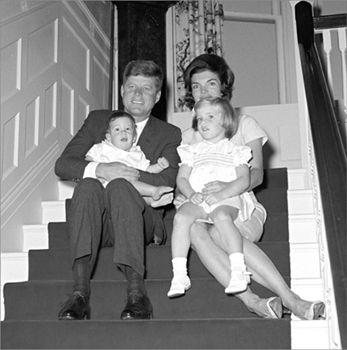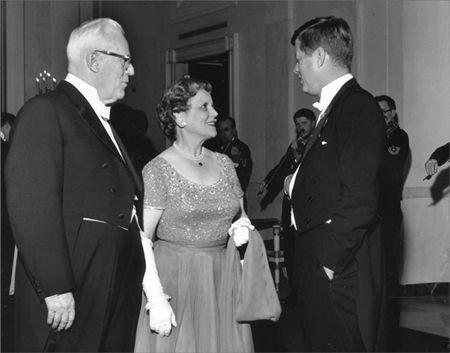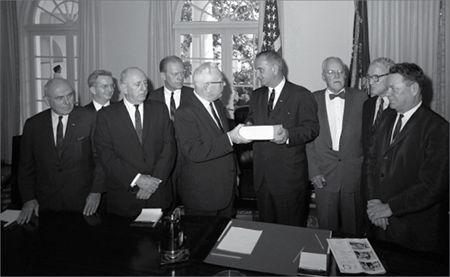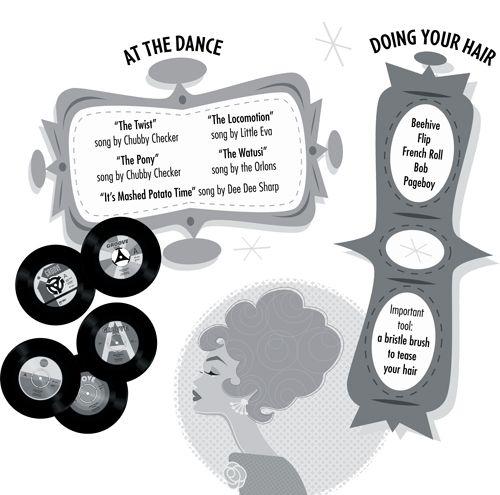Kennedy's Last Days: The Assassination That Defined a Generation (34 page)
Read Kennedy's Last Days: The Assassination That Defined a Generation Online
Authors: Bill O'Reilly

President De Gaulle welcomes Jackie Kennedy to Paris on May 31, 1961.
[© Bettmann/Corbis]
Jackie Kennedy
 If you bungle raising your children, I don’t think whatever else you do well matters very much.
If you bungle raising your children, I don’t think whatever else you do well matters very much.
 A camel makes an elephant feel like a jet plane.
A camel makes an elephant feel like a jet plane.
 There are many little ways to enlarge your child’s world. Love of books is the best of all.
There are many little ways to enlarge your child’s world. Love of books is the best of all.
 Now I think that I should have known that he was magic all along. I did know it—but I should have guessed that it would be too much to ask to grow old with and see our children grow up together. So now, he is a legend when he would have preferred to be a man.
Now I think that I should have known that he was magic all along. I did know it—but I should have guessed that it would be too much to ask to grow old with and see our children grow up together. So now, he is a legend when he would have preferred to be a man.

This portrait was taken in September 1961, when the Kennedys were visiting friends in Newport, Rhode Island.
[JFK Presidential Library and Museum]
THE ZAPRUDER FILM: A MOMENT-BY-MOMENT RECORD
O
N
F
RIDAY,
N
OVEMBER
22, 1963,
Abraham Zapruder, an executive of a Dallas clothing company, spent his lunch hour in Dealey Plaza. He used an 8mm camera to film the passing motorcade carrying John Kennedy, his wife, and other dignitaries. His camera caught the moments when the president was shot. Zapruder returned to his office and asked his assistant to call the police or find a Secret Service man. Agent Forrest Sorrels in the Dallas Secret Service office took the film to the local Eastman Kodak processing plant to be developed. The film captured 26.6 seconds in 486 frames of film.
Zapruder’s color film was used by the Warren Commission and is crucial to all experts who try to re-create the events of that day. Zapruder was shaken by what he saw through the lens. He wept when interviewed about the assassination even years later.
You can watch the film on YouTube.

Abraham Zapruder was standing at the west end of the colonnade, taking movie film when Kennedy was shot.
[William A. Mueller/
Shutterstock.com
]
INVESTIGATING THE ASSASSINATION: THE WARREN COMMISSION
O
N
N
OVEMBER
29, 1963,
one week after President Kennedy was assassinated, President Johnson announced the formation of a commission to investigate the event. The group, which was formally named the President’s Commission on the Assassination of President Kennedy, was led by the chief justice of the Supreme Court, Earl Warren. Its seven other members included Gerald R. Ford, then a representative from Michigan, who would become the 38th president after Richard Nixon resigned, and Allen W. Dulles, former director of the CIA under President Kennedy.
With thoroughness and speed, the Warren Commission, as it came to be called, interviewed 552 witnesses and considered 3,100 exhibits. It took testimony from 10 federal intelligence agencies, including the Secret Service, the FBI, the CIA, military intelligence, and the Department of State.

JFK chats with Supreme Court chief justice Earl Warren and his wife, Nina, before a dinner at the White House.
[JFK Presidential Library and Museum]
The final report, submitted just 10 months later on September 24, 1964, was 888 pages long. A few months later, the commission published 26 volumes of evidence that it had reviewed and more than 50,000 pages of documents, memorandums, and transcripts of its meetings.

Chief Justice Warren hands President Johnson the commission report. The seven other members of the committee attend. Future president Gerald Ford is fourth from the left.
[LBJ Library]
Lee Harvey Oswald never had a chance to defend himself in court, and so the commission did not have his testimony to consider. They took seriously their charge to be neutral fact finders and concluded that Oswald, alone and unaided, shot and killed President Kennedy and wounded Texas governor John Connally, and that Jack Ruby also acted alone. It found that the motivation for Oswald’s act was his “urge to try to find a place in history” and that it was the product of his whole life, one “characterized by isolation, frustration, and failure.”
The report also recommended changing the protocols for presidential security.
You can read the report at the National Archives website:
www.archives.gov/research/jfk/warren-commission-report
.
SOME FACTS ABOUT THE EARLY 1960s
T
HE EARLY
1960
S LOOKED BACK
to the fifties a little bit in style and fashion but began to change when the Kennedys moved in to the White House in 1961. Glamour was in vogue. Young people began to loosen up, dancing the twist and watching
West Side Story
. Here are some top lists from the year 1961 (unless otherwise noted).
